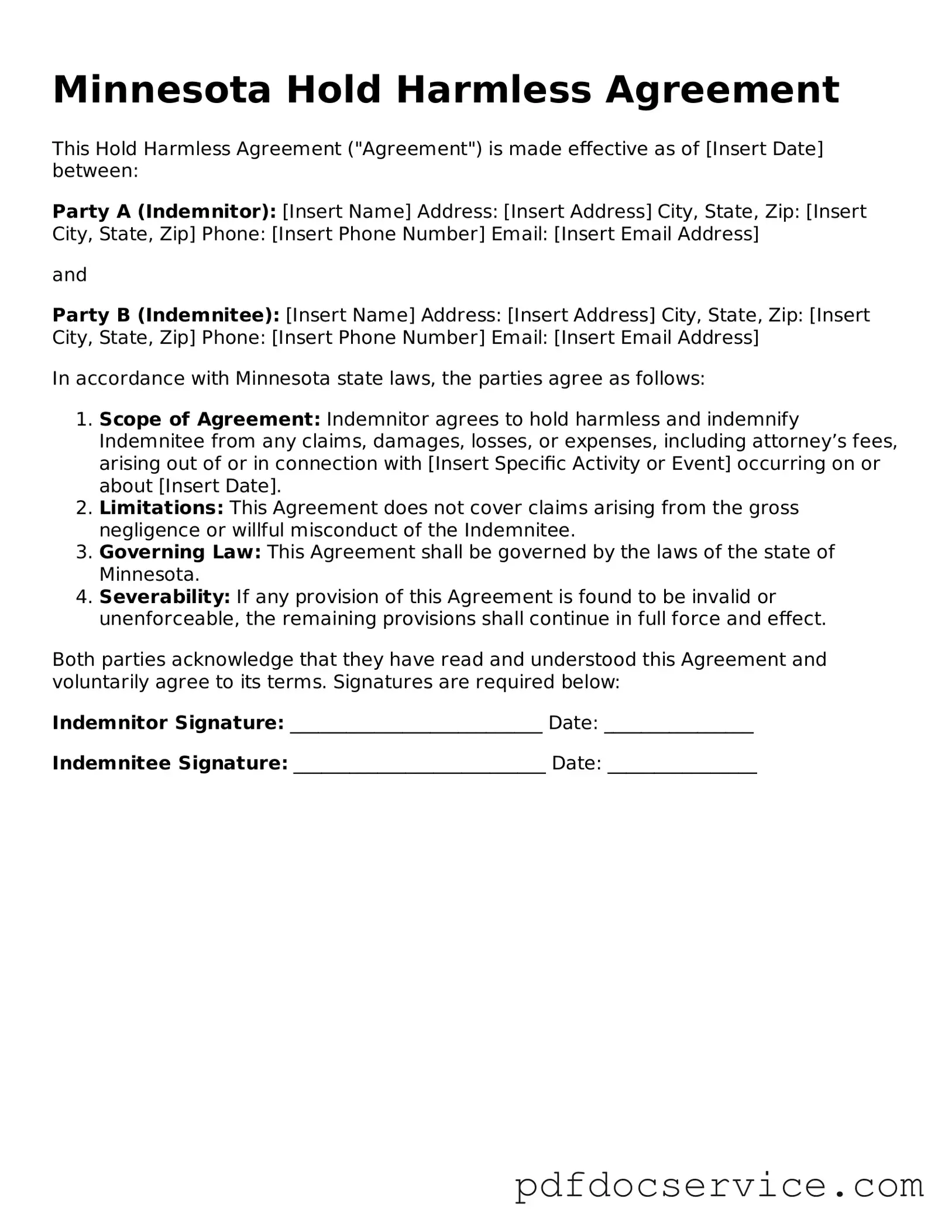Printable Hold Harmless Agreement Template for Minnesota
The Minnesota Hold Harmless Agreement is a legal document designed to protect one party from liability for damages or injuries that may occur during a specific activity or event. This form is often utilized in various situations, including events, contracts, and agreements where risk is involved. Understanding its purpose and implications is essential for anyone looking to navigate potential legal responsibilities in Minnesota.
Open Hold Harmless Agreement Editor
